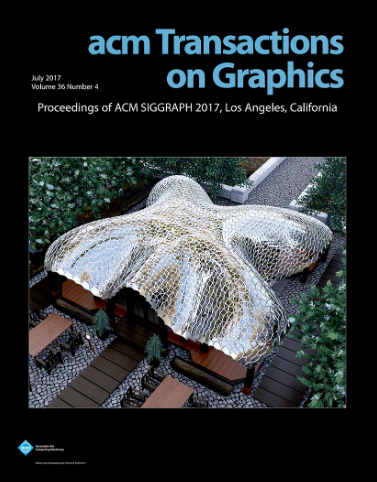Adaptive Phase-Field-FLIP for Very Large Scale Two-Phase Fluid Simulation
IF 9.5
1区 计算机科学
Q1 COMPUTER SCIENCE, SOFTWARE ENGINEERING
引用次数: 0
Abstract
Capturing the visually compelling features of large-scale water phenomena, such as the spray clouds of crashing waves, stormy seas, or waterfalls, involves simulating not only the water but also the motion of the air interacting with it. However, current solutions in the visual effects industry still largely rely on single-phase solvers and non-physical "white-water" heuristics. To address these limitations, we present Phase-Field-FLIP (PF-FLIP), a hybrid Eulerian/Lagrangian method for the fully physics-based simulation of very large-scale, highly turbulent multiphase flows at high Reynolds numbers and high fluid density contrasts. PF-FLIP transports mass and momentum in a consistent, non-dissipative manner and, unlike most existing multiphase approaches, does not require a surface reconstruction step. Furthermore, we employ spatial超大规模两相流体模拟的自适应相场翻转
捕捉大规模水现象的视觉上引人注目的特征,如浪花、暴风雨或瀑布,不仅需要模拟水,还需要模拟与水相互作用的空气运动。然而,目前视觉特效行业的解决方案仍然很大程度上依赖于单相求解器和非物理的“激流”启发式。为了解决这些限制,我们提出了相场翻转(PF-FLIP),这是一种混合欧拉/拉格朗日方法,用于在高雷诺数和高流体密度对比下完全基于物理的大规模高湍流多相流模拟。PF-FLIP以一致、非耗散的方式传输质量和动量,与大多数现有的多相方法不同,它不需要表面重建步骤。此外,我们在模拟算法的所有关键组件(包括压力泊松求解器)中采用了空间适应性。我们通过双多分辨率方案增强了PF-FLIP,该方案结合了高效的无树自适应网格和自适应粒子,以及为高密度对比多相流量身定制的快速自适应泊松求解器。我们的方法能够模拟两相流场景,具有以前在图形中无法实现的物理真实感和细节水平,支持数十亿粒子和自适应3D分辨率,每个维度在单个工作站上具有数千个网格单元。
本文章由计算机程序翻译,如有差异,请以英文原文为准。
求助全文
约1分钟内获得全文
求助全文
来源期刊

ACM Transactions on Graphics
工程技术-计算机:软件工程
CiteScore
14.30
自引率
25.80%
发文量
193
审稿时长
12 months
期刊介绍:
ACM Transactions on Graphics (TOG) is a peer-reviewed scientific journal that aims to disseminate the latest findings of note in the field of computer graphics. It has been published since 1982 by the Association for Computing Machinery. Starting in 2003, all papers accepted for presentation at the annual SIGGRAPH conference are printed in a special summer issue of the journal.
 求助内容:
求助内容: 应助结果提醒方式:
应助结果提醒方式:


